




When it comes to cleaning windows, most people reach for commercial glass cleaners or homemade solutions. However, there are some unconventional methods that have gained attention in recent years. One of these methods is using toothpaste to clean windows.
But the question is – can you really use toothpaste to clean windows? In this ultimate guide, we will explore this unconventional cleaning method, its effectiveness, and whether it is a viable alternative to traditional window cleaners.
Firstly, let’s discuss the science behind toothpaste. Toothpaste contains mild abrasives and polishing agents that help remove stains and brighten surfaces. These ingredients, coupled with the gentle abrasive action of toothpaste, make it a suitable candidate for cleaning glass surfaces. However, it’s important to note that not all toothpastes are created equal, and some may contain ingredients that could damage or scratch windows.
In this comprehensive guide, we will delve into the step-by-step process of using toothpaste to clean windows, the potential risks and drawbacks, and tips to maximize its effectiveness. Whether you’re an eco-conscious homeowner looking for natural cleaning alternatives or simply curious about this unconventional method, read on to discover if toothpaste is the key to sparkling, streak-free windows.
Can Toothpaste Be Used for Window Cleaning?
When it comes to cleaning windows, there are countless products available on the market. However, you may be wondering if you can use toothpaste as an alternative cleaning solution. While toothpaste is primarily designed for oral hygiene, it does possess certain properties that make it a potentially effective window cleaner.
1. Abrasive Properties
One of the main reasons toothpaste can be used for window cleaning is its abrasive properties. Toothpaste contains small particles that act as abrasives, helping to remove stains and dirt from surfaces. When applied to a window, these particles can assist in buffing away grime and leaving the glass sparkling clean.
2. Whitening Agents
Toothpaste often contains whitening agents, such as baking soda, hydrogen peroxide, or silica, which can help remove stubborn stains. These agents work by breaking down and lifting away discoloration, making toothpaste potentially effective for removing tough marks on windows.
3. Application Method
Using toothpaste for window cleaning requires a slightly different method compared to traditional window cleaners. Here is a step-by-step guide:
- Choose a non-gel toothpaste that does not contain any additives, such as beads or gels.
- Squeeze a small amount of toothpaste onto a clean, damp cloth.
- Gently rub the toothpaste onto the window in circular motions, focusing on any stains or marks.
- Allow the toothpaste to sit on the window for a few minutes to allow the abrasive and whitening agents to work.
- Using a clean, damp cloth, wipe away the toothpaste from the window.
- If necessary, repeat the process on any remaining stains or marks.
- Finally, use a dry cloth to buff the window and leave it streak-free.
4. Limitations
While toothpaste can be useful for cleaning windows in certain situations, it is important to note its limitations. Toothpaste may not be as effective on very dirty or greasy windows. In addition, the abrasive particles in toothpaste can potentially scratch certain delicate window surfaces, so it is essential to test on a small, inconspicuous area before applying it to the entire window.
| Pros | Cons |
|---|---|
|
|
In conclusion, while toothpaste can be used for window cleaning in certain situations, it is important to consider its limitations and potential risks. If you decide to give it a try, be sure to choose the right type of toothpaste and follow the proper application method to achieve the best results.
Discover the Truth Behind This Household Cleaning Hack
Using toothpaste as a cleaning agent is a popular household hack that many people swear by. It is said to be an effective and affordable way to clean a variety of items, including windows. But is this cleaning hack really as effective as it seems? Let’s explore the truth behind using toothpaste to clean windows.
The Science Behind Toothpaste
Toothpaste is designed specifically for cleaning teeth and oral hygiene. It contains mild abrasives that help remove plaque and stains from teeth, as well as other ingredients like fluoride to prevent tooth decay. While toothpaste may be effective for cleaning teeth, its effectiveness on other surfaces, like windows, is questionable.
The Potential Benefits
Proponents of using toothpaste to clean windows claim that its mild abrasive properties can help remove dirt, grime, and even small scratches from glass surfaces. They also believe that the minty freshness of toothpaste can leave windows smelling clean and fresh.
Furthermore, toothpaste is readily available in most households, making it a convenient option for quick and easy cleaning in a pinch. It is also generally safe to use on glass and unlikely to cause any damage or discoloration.
The Drawbacks and Limitations
While toothpaste may have some potential benefits as a cleaner, it also has several drawbacks and limitations when it comes to cleaning windows. First and foremost, toothpaste is not specifically formulated for cleaning glass. Other cleaning products, such as glass cleaners, may be more effective at removing tough stains and leaving windows streak-free.
Additionally, toothpaste is not designed to dissolve and rinse away easily like traditional cleaning products. This can lead to a sticky residue being left behind on windows, which can attract more dirt and make the windows appear dirtier over time. Therefore, using toothpaste as a long-term solution for cleaning windows may not be the best choice.
The Verdict
In conclusion, while using toothpaste to clean windows may provide some short-term benefits, it is not the most effective or efficient method for achieving truly clean and streak-free windows. For best results, it is recommended to use cleaning products specifically designed for glass surfaces and follow proper cleaning techniques.
- Toothpaste may be used as a temporary solution in emergency situations when other cleaning products are unavailable.
- It is important to use a soft cloth or sponge to avoid scratching the glass surface when using toothpaste.
- Regularly cleaning windows with appropriate cleaning products and techniques is the best way to maintain cleanliness and clarity.
While toothpaste can be a versatile household item, it is best to stick to its intended use for oral hygiene rather than rely on it as a multipurpose cleaner.
The Pros and Cons of Using Toothpaste on Windows
Pros

- Removes stubborn stains: Toothpaste can be effective in removing stubborn stains on windows, such as water spots, mineral deposits, and soap scum. The abrasive properties of toothpaste help to break down and lift these stains.
- Cost-effective: Toothpaste is an inexpensive household item that many people already have in their homes. Using toothpaste as a window cleaner can save you money compared to buying specialized window cleaning products.
- Gentle on glass: Most toothpastes are formulated to be gentle on tooth enamel, which makes them suitable for use on glass surfaces too. Using toothpaste to clean windows is less likely to cause scratches or damage to the glass.
- Easy to find: Toothpaste is widely available in supermarkets, drug stores, and online. It is easy to find and purchase whenever you need it.
Cons
- Not as effective on grease: While toothpaste can be good at removing stains, it may not be as effective on greasy marks or fingerprints. In such cases, specialized window cleaning products or household cleaners may be more suitable.
- Time-consuming: Cleaning windows with toothpaste can take more time and effort compared to using dedicated window cleaning products. The need to scrub and rinse off the toothpaste residue may require additional steps and prolong the cleaning process.
- May leave residue: Some types of toothpaste may leave behind a residue on windows, especially if not rinsed off thoroughly. This residue can make windows look cloudy or streaky, requiring additional cleaning to achieve a clear and streak-free finish.
- Not suitable for all types of windows: Toothpaste may not be suitable for all types of windows, particularly those with delicate coatings or treatments. It is important to check the manufacturer’s recommendations or consult a professional if you are unsure about using toothpaste on a specific type of window.
While toothpaste can be a convenient and cost-effective option for cleaning windows, it is important to weigh the pros and cons before using it. Depending on the type of stains, the effort required, and the specific characteristics of your windows, you may find that toothpaste is a suitable solution or that you prefer using other cleaning products.
Learn about the Benefits and Drawbacks of this Cleaning Method
Benefits
- Effective Cleaning: Toothpaste can effectively remove dirt, grime, and stains from windows, leaving them looking sparkling clean.
- Readily Available: Toothpaste is widely available and can be found in most households, making it a convenient option for cleaning windows.
- Affordable: Toothpaste is a cost-effective cleaning solution compared to specialized window cleaning products.
- Gentle on Glass: Toothpaste is generally safe to use on glass surfaces and does not cause damage or scratches.
Drawbacks
- Residue: Toothpaste may leave behind a sticky residue on windows, requiring extra effort to remove completely.
- Scent: Some toothpaste brands have strong scents, which can linger on the windows and may not be desirable for some individuals.
- Not Suitable for Exterior Windows: Toothpaste is not recommended for cleaning exterior windows, especially if they are located on higher levels, as it can be difficult to rinse off properly.
- No Anti-Static Properties: Unlike specialized window cleaning products, toothpaste does not have anti-static properties, which can cause windows to attract more dust and dirt in the long run.
While toothpaste can be a viable option for cleaning windows in certain situations, it is important to consider the drawbacks and limitations of this method. It may be more suitable for smaller windows or as a temporary solution, but for larger or heavily soiled windows, it is generally recommended to use dedicated window cleaning products for best results.
Step-by-Step Guide to Clean Your Windows with Toothpaste
1. Gather Your Materials
Before you begin cleaning your windows with toothpaste, make sure you have all the necessary materials:
- Toothpaste (non-gel)
- Microfiber cloth or sponge
- Water
- Bucket
- Window squeegee
2. Prepare the Cleaning Solution
Fill a bucket with water and add a small amount of toothpaste (about a teaspoon) to create a cleaning solution. Mix the toothpaste and water well until it forms a slightly soapy consistency.
3. Apply the Cleaning Solution
Dip your microfiber cloth or sponge into the cleaning solution and apply it to the window surface. Make sure to cover the entire window with the solution.
4. Scrub the Window
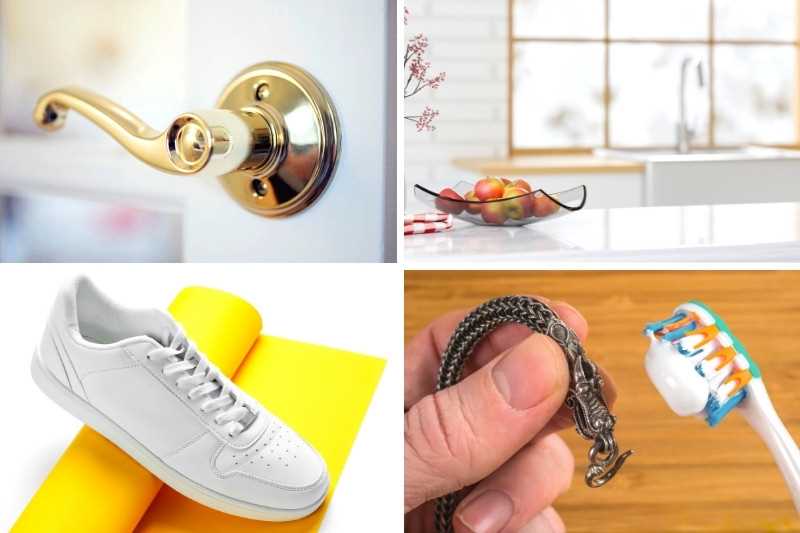
Using the cloth or sponge, scrub the window in circular motions to remove dirt, stains, and grime. Pay extra attention to any stubborn spots or marks.
5. Rinse with Water

Once you’re done scrubbing, rinse the window thoroughly with clean water. This will remove any residual toothpaste and dirt from the surface.
6. Dry the Window
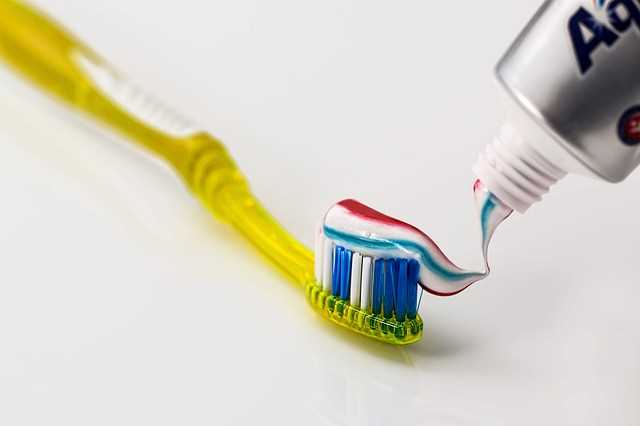
Using a window squeegee, start from the top and work your way down to remove excess water from the window surface. Make sure to wipe off the squeegee after each stroke to avoid streaks.
7. Polish with a Dry Cloth
Finally, use a clean, dry microfiber cloth to polish the window and remove any remaining streaks or water spots. Wipe the window in a straight, vertical motion for a sparkling finish.
8. Repeat if Necessary
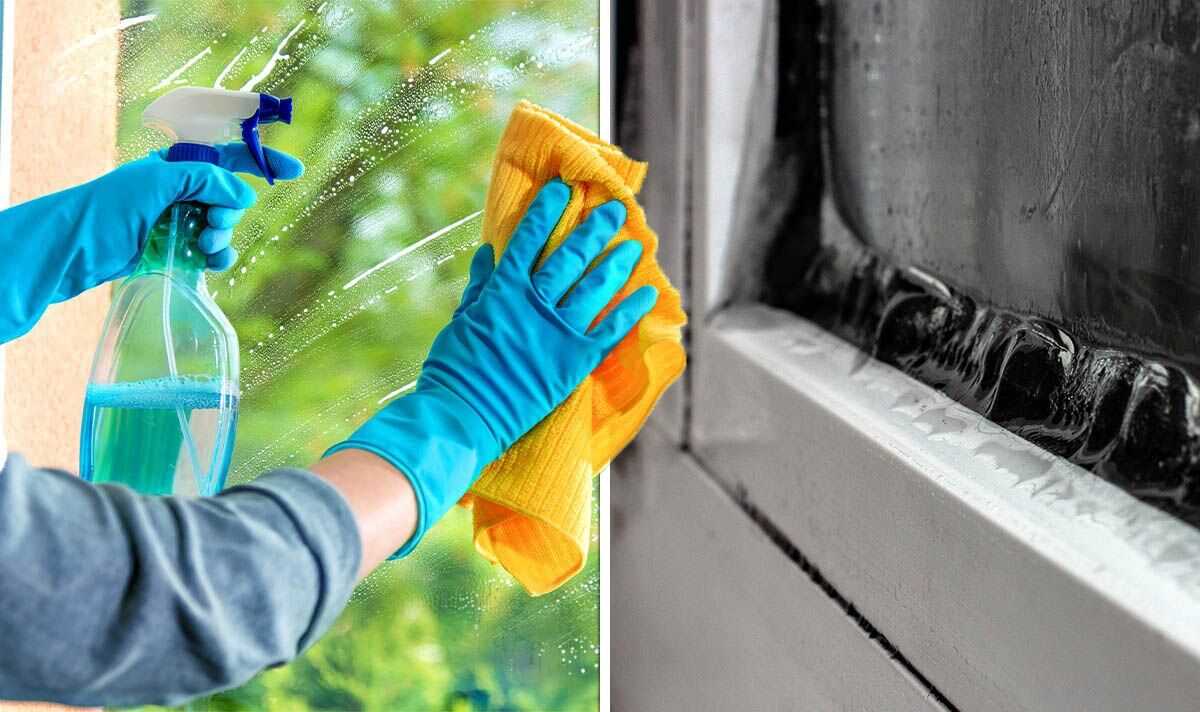
If your window requires additional cleaning, repeat the process from step 3 onwards until you achieve the desired results.
Remember to test the toothpaste on a small, inconspicuous area of your window first to ensure it doesn’t cause any damage or discolouration. Avoid using toothpaste with added ingredients like whitening agents or mint flavoring, as these may leave residue or streaks on your windows.
| Tips: | – Use a non-gel toothpaste for best results.
– Work in small sections to avoid the cleaning solution drying on the window. – Use a toothbrush to clean corners and edges. – Repeat the process regularly to maintain clean windows. |
| Warnings: | – Do not use toothpaste on tinted windows, as it may damage the tint.
– Avoid scrubbing too vigorously, as it may scratch the window surface. – If your windows are extremely dirty, it may be best to use a specialized window cleaner. |
Follow these Easy Steps to Achieve Crystal Clear Windows
Gather Your Supplies
Before you begin cleaning your windows, gather all the necessary supplies:
- Microfiber cloth or lint-free cloth
- Window cleaning solution or water
- Toothpaste
- Bucket
- Sponge or soft-bristled brush
- Squeegee
Prepare the Cleaning Solution
If you are using a window cleaning solution, follow the instructions on the package to mix it with water. Alternatively, you can use pure water. Fill a bucket with the solution or water.
Apply Toothpaste to Stains
If there are stubborn stains on your windows, apply a small amount of toothpaste directly on the stain. Gently rub the toothpaste onto the stain using a sponge or soft-bristled brush. Let it sit for a few minutes.
Clean the Windows
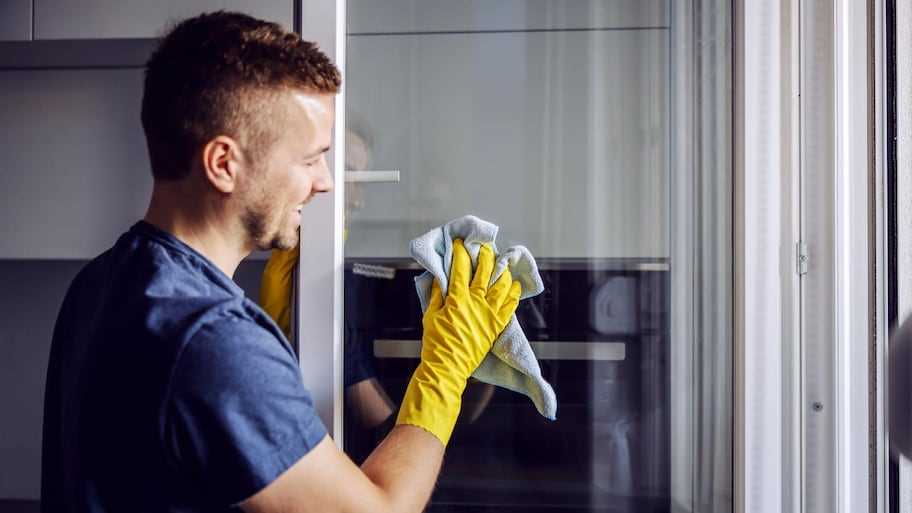
Dip the sponge or cloth into the cleaning solution or water. Wring out any excess liquid. Starting from the top, clean the window using circular motions to remove dirt and grime. Pay extra attention to the areas with toothpaste stains.
If you are using a squeegee, wipe the excess liquid with a lint-free cloth after each stroke to avoid streaks or drips.
Rinse and Wipe Dry
Once you have cleaned the entire window, fill another bucket with clean water. Rinse the sponge or cloth in the water and wring out any excess liquid. Go over the window again to remove any remaining soap or toothpaste residue.
Finally, use a dry microfiber cloth or lint-free cloth to wipe the window dry. Make sure to remove any streaks or water spots for a crystal clear finish.
Repeat if Necessary
If your windows are still not completely clean, repeat the process as needed. It may take a few rounds of cleaning to achieve the desired results.
Enjoy Your Crystal Clear Windows
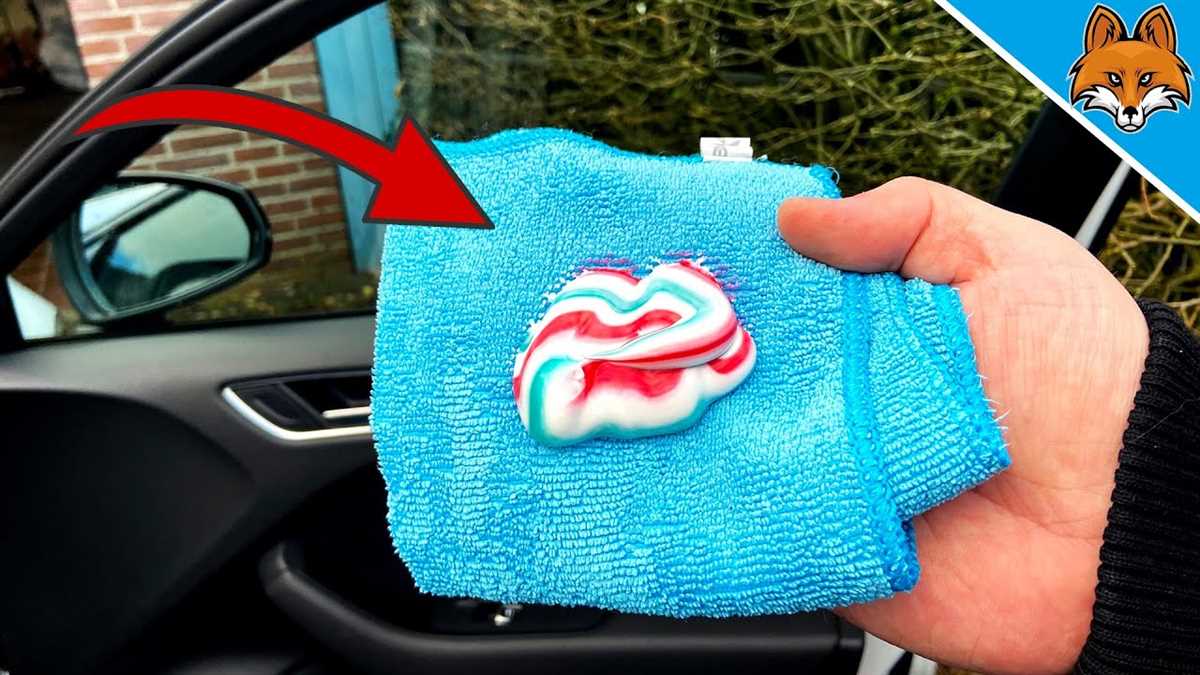
Once your windows are dry and streak-free, step back and admire the sparkling results. Your hard work has paid off, and you can now enjoy crystal clear windows.
Alternative Window Cleaning Methods to Consider
1. Vinegar Solution

A vinegar solution is a popular and effective alternative to traditional window cleaning methods. To create the solution, mix equal parts of distilled white vinegar and water in a spray bottle. Spray the solution onto the windows and wipe them clean with a microfiber cloth or squeegee. Vinegar is known for its ability to cut through grease and grime, leaving your windows sparkling clean.
2. Lemon Juice
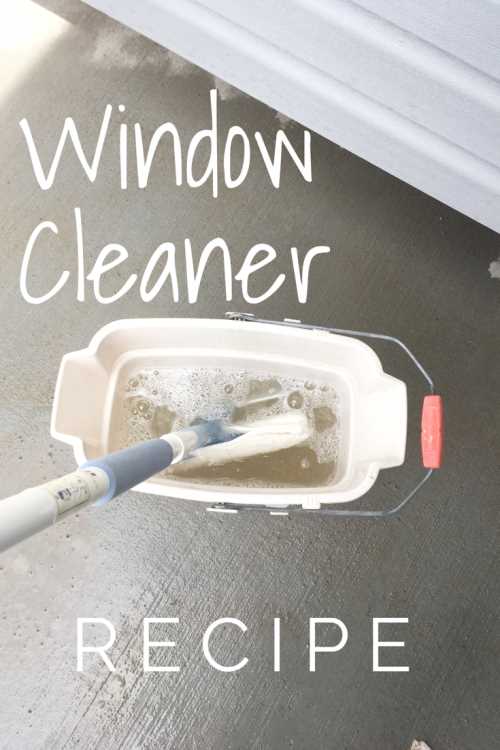
Lemon juice is another natural alternative that can be used to clean windows. The citric acid in lemon juice helps to break down dirt and stains, giving your windows a streak-free shine. Simply mix equal parts of lemon juice and water in a spray bottle, spray it onto the windows, and wipe with a lint-free cloth or squeegee. The fresh scent of lemons is an added bonus.
3. Newspaper
Believe it or not, newspapers can be used as a tool for streak-free window cleaning. Simply spray your preferred window cleaning solution onto the glass and wipe it clean with crumpled newspaper. The ink in the newspaper helps to remove dirt and leaves your windows sparkling without streaks. However, keep in mind that this method may leave ink residue on your hands, so gloves are recommended.
4. Baking Soda Paste
Baking soda is a versatile household item that can also be used to clean windows. Create a paste by mixing baking soda with water until it forms a thick consistency. Apply the paste to the windows using a cloth or sponge and scrub gently. Rinse the windows with water and dry them with a clean cloth for a streak-free shine.
5. Club Soda
Club soda is a handy alternative for cleaning windows, especially for removing stubborn stains and spots. Pour club soda into a spray bottle and spray it onto the windows. Use a cloth or sponge to scrub away the stains, and then wipe the windows dry. The bubbles in the club soda help to lift away dirt and grime, leaving your windows clean and sparkling.
6. Microfiber Cloths
Microfiber cloths are a great alternative to paper towels for cleaning windows. These cloths are designed to attract and trap dirt, dust, and grime, making them highly effective at cleaning windows without leaving streaks. Simply dampen the microfiber cloth with your preferred window cleaning solution and wipe the windows clean.
These alternative window cleaning methods offer effective and eco-friendly options for achieving clean and streak-free windows. So, give them a try and see which method works best for you!
FAQ
Can toothpaste be used to clean windows?
Yes, toothpaste can be used to clean windows. It can help remove stains, grime, and dirt from glass surfaces.
What kind of toothpaste should I use to clean windows?
It is best to use a non-gel, non-whitening toothpaste to clean windows. Avoid using toothpaste with added bleach or whitening agents, as they may leave streaks or residue on the glass.
How do I clean windows with toothpaste?
To clean windows with toothpaste, apply a small amount of toothpaste onto a clean cloth or sponge. Gently rub the toothpaste onto the glass surface in circular motions. Rinse the glass thoroughly with water and wipe dry with a clean cloth.
Can toothpaste remove scratches from windows?
No, toothpaste cannot remove deep scratches from windows. It may help minimize the appearance of light surface scratches, but for deep scratches, it is best to consult a professional glass repair service.
Are there any alternatives to using toothpaste to clean windows?
Yes, there are alternative methods to clean windows without using toothpaste. Some options include using vinegar and water solution, commercial glass cleaners, or homemade cleaning solutions using ingredients like lemon juice or baking soda.











